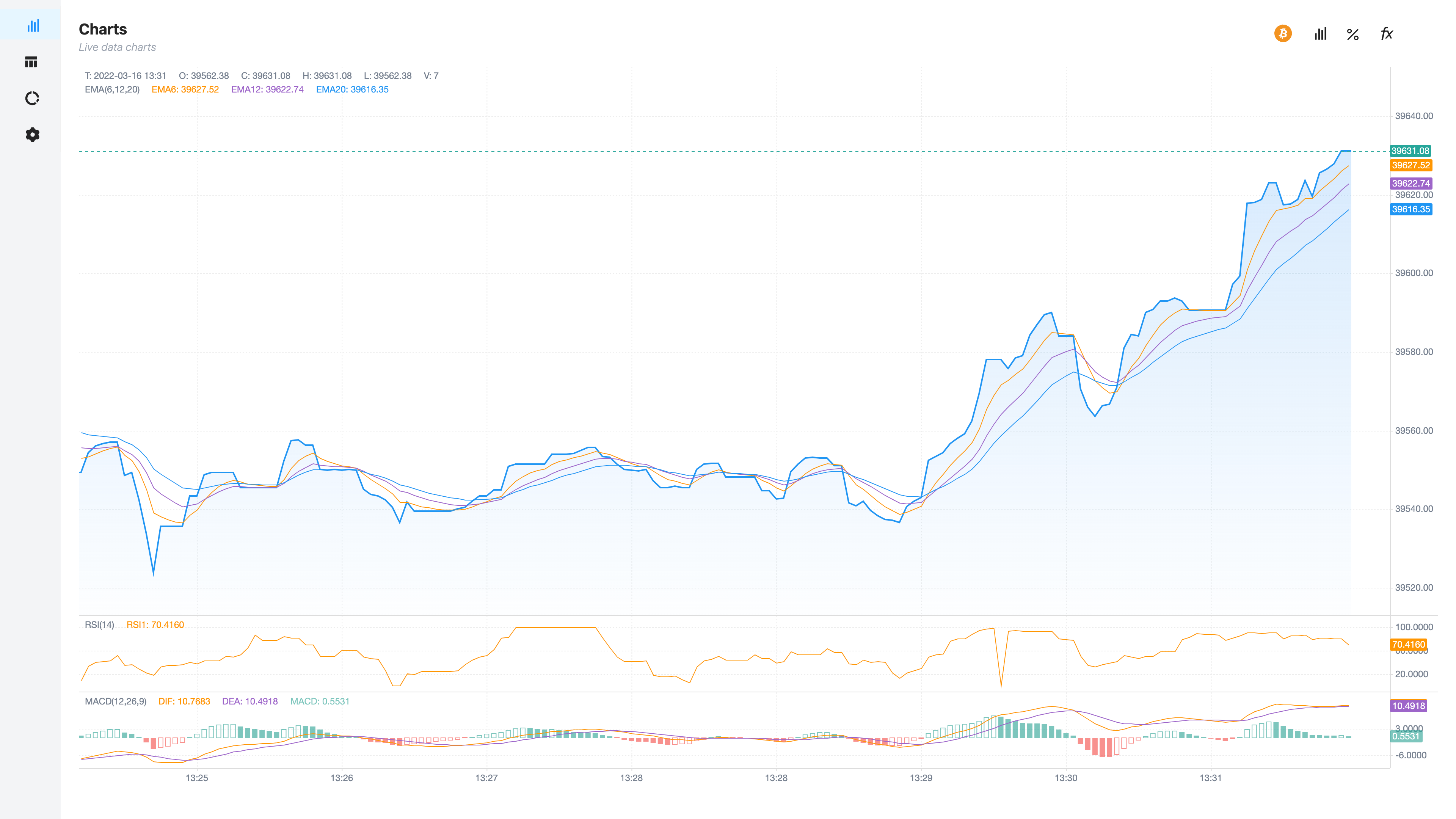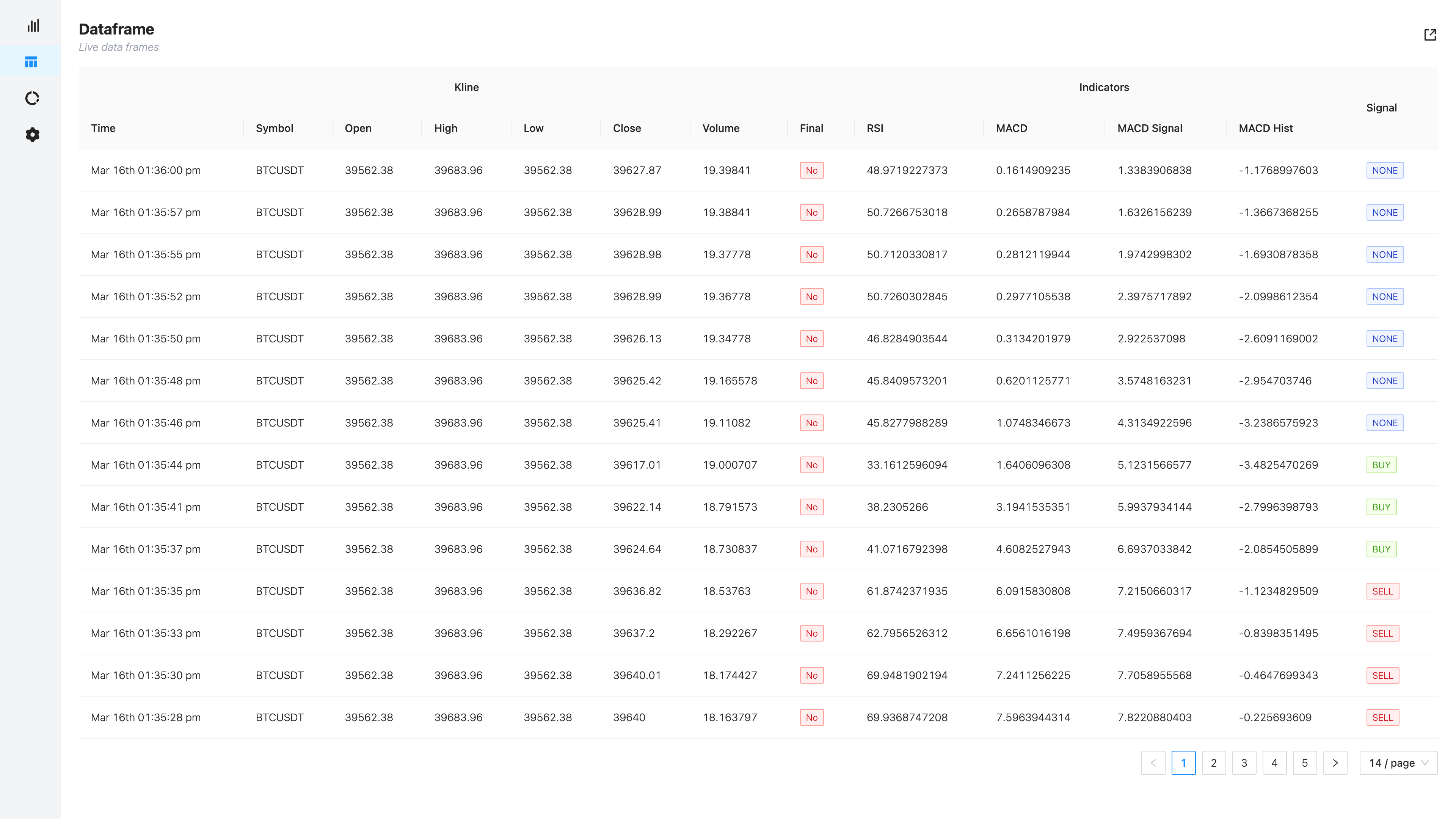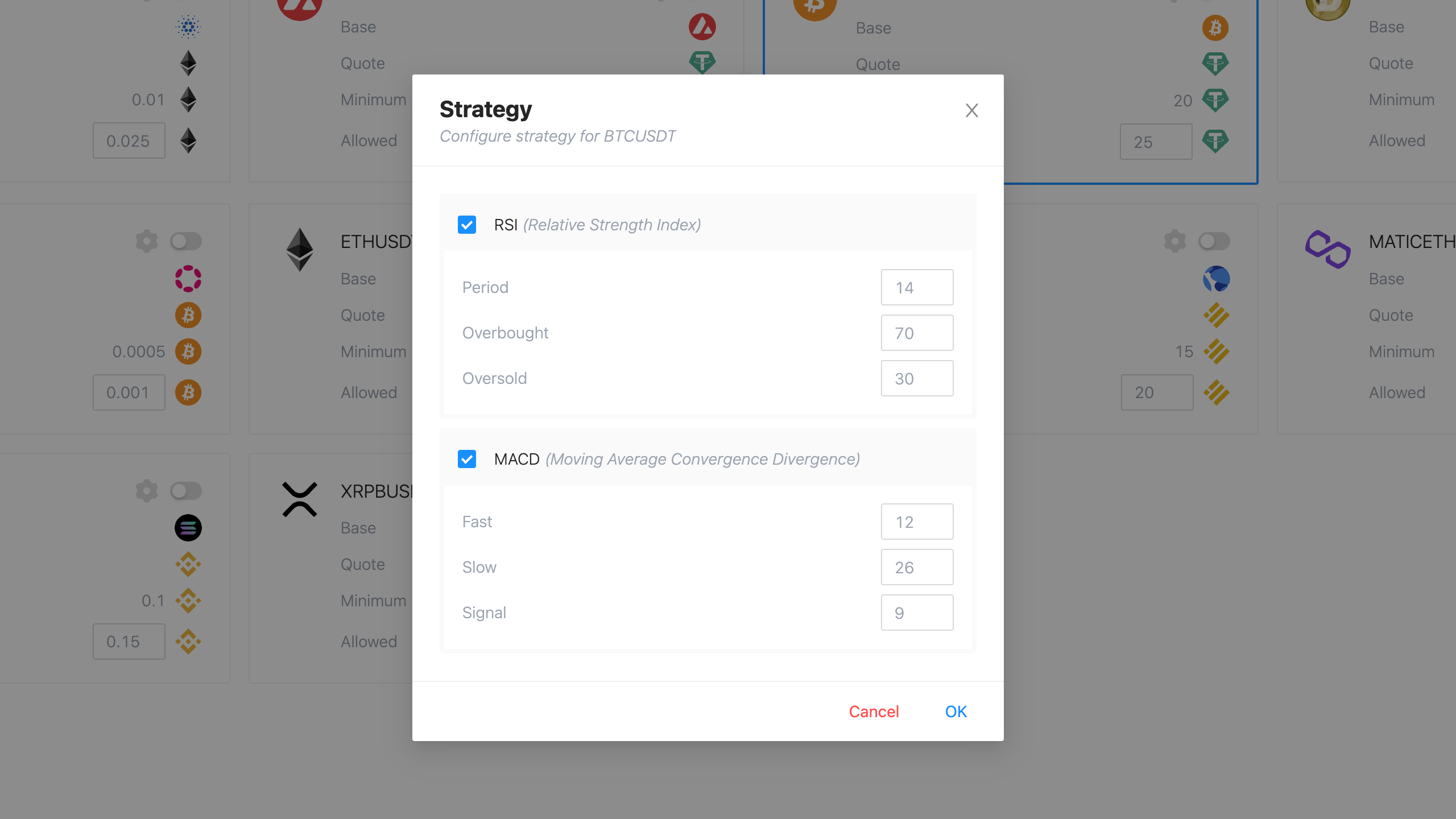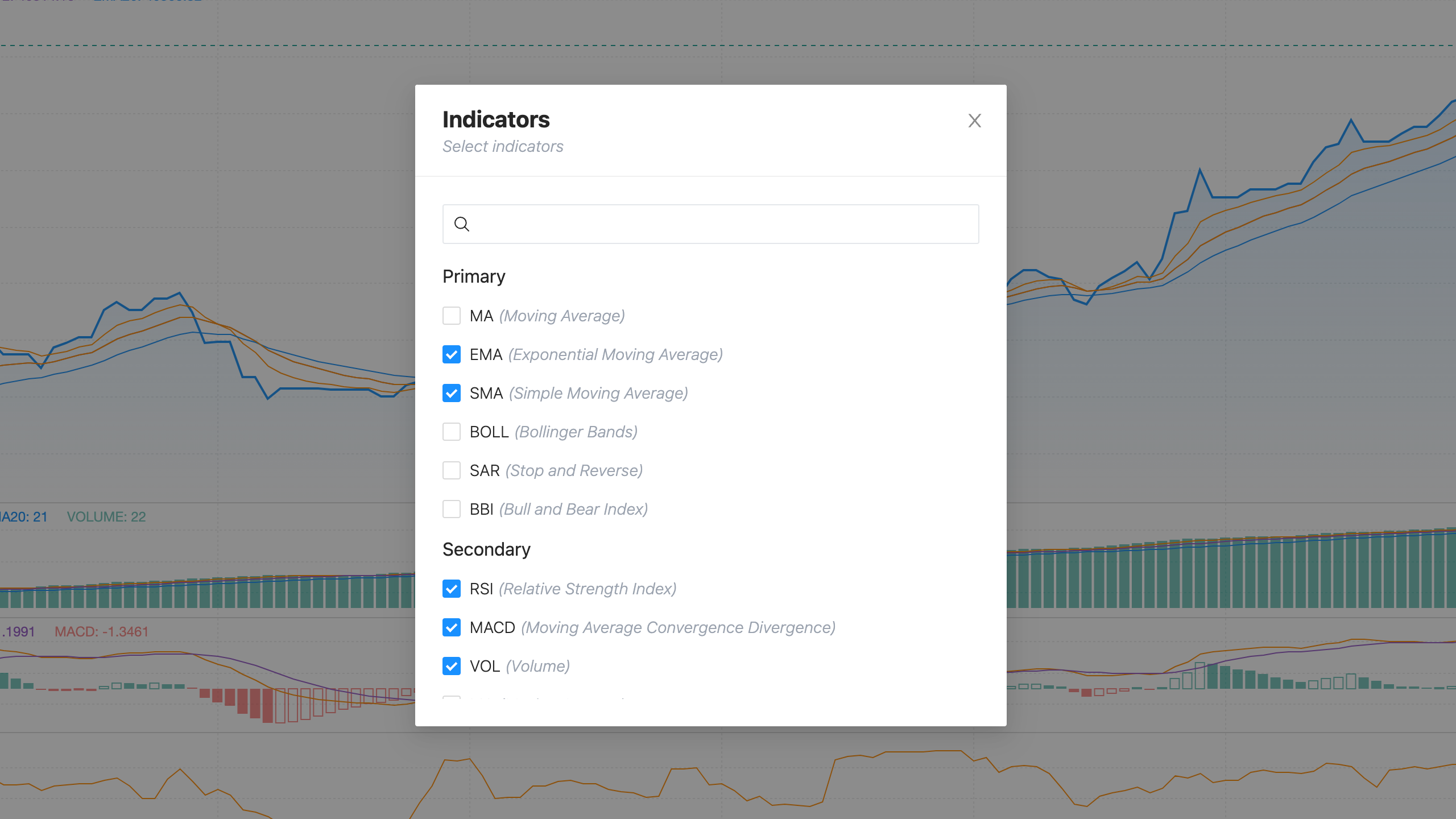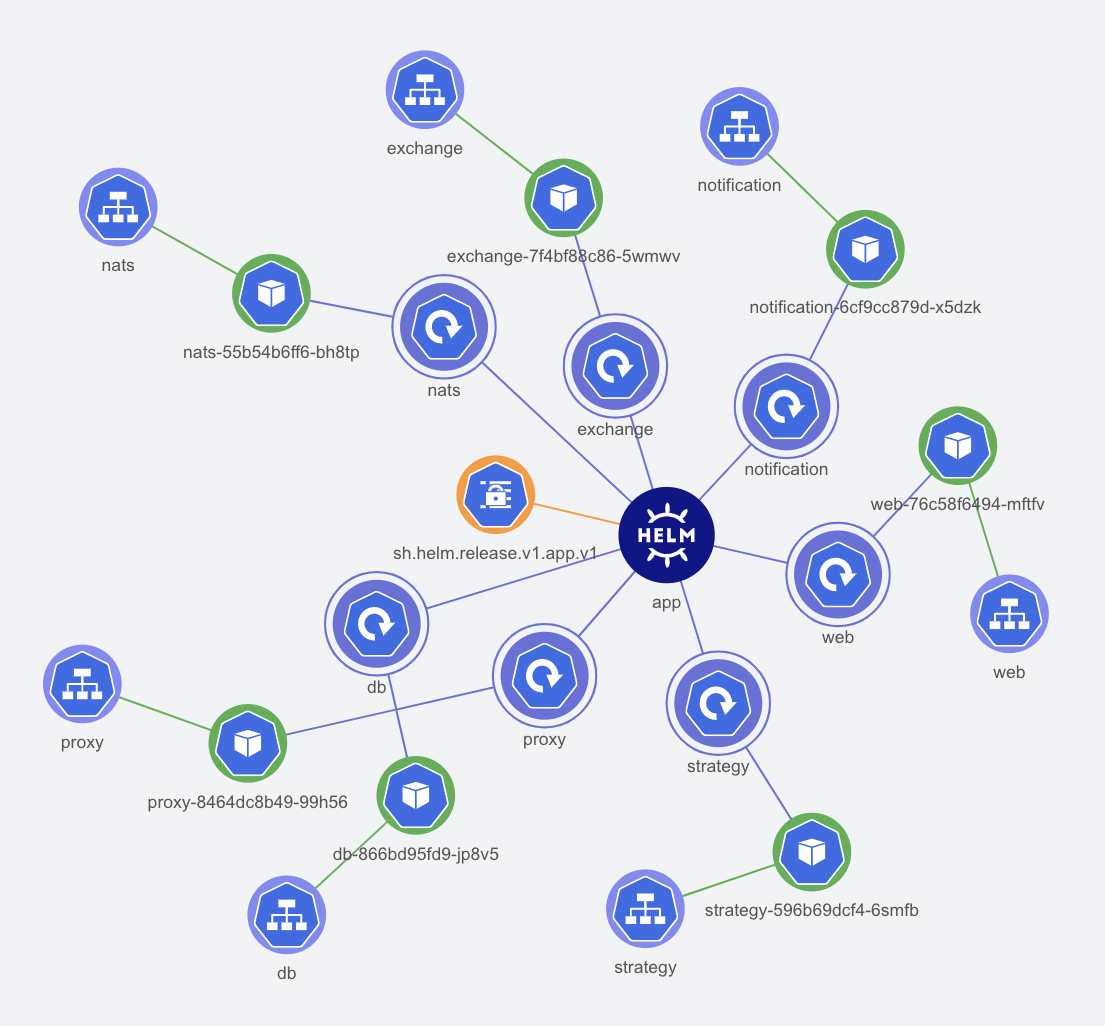Ready to deploy, distributed cryptocurrency trading bot.
USE THIS SOFTWARE AT YOUR OWN RISK. THE AUTHOR ASSUMES NO LIABILITY FOR YOUR TRADING OUTCOMES.
- Overview
- Motivation
- Features
- Technologies
- Architecture
- Getting Started
- Customization
- Usage
- Deployment
- Contribute
- License
Here's a short overview of the project.
A few months ago I got into the crypto market. It was all new and fascinating to me. The idea of this project originally came from a script I used to automate buying and selling of fiat assets.
I was curious and wanted to scale it into a real system that can execute trades for me. I had a lot of fun building this. I got to play with lots of different technologies while growing my financial knowledge.
Feel free to reach out to me if you have any additional questions. There are lots of fixes and features to be done!
It is important to note that this project is under active development and was developed as an experiment. Currently, only Binance is supported but contributions are welcome!
Please leave a ⭐ as motivation or support by donating if you liked the idea 😄
This system has lots of features such as:
-
Web UI: Real-time access to charts, technical indicators, and portfolio.
-
Configurable: Supports assets and strategies customization easily without touching any code!
-
Portable: Export your trades and real-time data frame to CSV.
-
Multiple Assets: Trade multiple crypto assets simultaneously!
-
Telegram Support: On the move? Use Telegram bot to receive real-time notifications and much more.
-
Ready to deploy: Comes with Infrastructure as Code which is ready to deploy to Digital Ocean.
-
Easy to upgrade: Modify the system easily to your needs.
It's a microservices based architecture with event driven approach for decoupling. It uses distributed streams and messaging which keeps the system simple yet robust to make sure it can grow in the future.
Note: Kubernetes diagram was generated using Lens - The Kubernetes IDE
Why so many technologies?
This started as an all Go project, but then I decided to add Python to the mix as it has a really good ecosystem for technical indicators and mathematical use cases.
For the web, I used React as it's easy and TypeScript provides some sanity to JavaScript projects!
Nginx and Postgres fit right in as the use case grew. As always, use what's right for the project!
Why event driven?
Originally I made this using HTTP REST, but systems like this are event driven by nature. Plus this approach helps to decouple services even more.
How do services communicate?
All the messaging infrastructure use cases are handled by NATS. Inter-service communications are mainly via publish-subscribe and request-reply patterns. Essentially, NATS acts as our service mesh!
We also use JetStream for real-time, persisted data streams.
Read more about Distributed communication patterns with NATS
Why Kubernetes? Isn't it overkill?
I agree! Kubernetes can be bit overkill, especially for this project. But my goal here was to keep it cloud agnostic, even though it was very tempting to just spin up AWS lambdas with event bridge.
Here we will setup our development environment. But first, we will need to install the following tools.
Tools
Steps
- Once all the tools are installed, execute
make prepareto prepare the local environment. - Create a
infrastructure/k8s/env.yamlto similar structure asinfrastructure/k8s/env.example.yamland follow this guide. - Review the configuration in
services/exchange/config.json - Start development with
make devcommand. - Use
make stopto stop the local minikube cluster.
We can customize trading strategies either via web app or services/exchange/config.json directly.
Currently, only few trading strategies like RSI and MACD are supported and I plan to add more soon.
Telegram bot helps us to interact with the system easily and receive real-time notifications.
Commands
The telegram bot supports the following commands:
/configs: Get asset configurations./balance: Get current account balance./positions: Get actively held positions./stats: Get portfolio statistics./enable: Enable trading for a symbol./disable: Disable trading for a symbol./dump: Dump all the positions for a symbol.
Note: enable, disable and dump commands are symbol specific, and are executed as /cmd symbol. Example, /enable ETHUSDT
Since this application deals with sensitive financial data, it is not recommended to expose it via ingress unless we have proper RBAC authorization in place. Hence, it is recommended to connect to it via port-forwarding on your local machine.
Steps
- Connect to the application via port-forwarding using
make connectcommand.
Note: Make sure doctl is authenticated, and we're using the correct k8s cluster name.
-
Open
localhost:8080to see the web interface. -
Once done, use the
make disconnectcommand to remove the kubectl context from your machine.
Note: It is recommended to use the telegram bot over the user interface on non-secure systems.
Deployments can be done via deploy.yml Github actions to our Digital Ocean Kubernetes cluster. But first, we will need to provision our infrastructure.
Important: Infrastructure we're about to provision has its own cost!
Tools
Steps
- Create and export a GITHUB_TOKEN to access our Github container registry.
$ export TF_VAR_GHCR_TOKEN=value-of-your-token
- Get an API token from DigitalOcean dashboard and export it temporarily for terraform.
$ export DIGITALOCEAN_TOKEN=value-of-your-token
- Apply the Terraform configuration.
$ cd infrastructure
$ terraform init
$ terraform apply
- Go to Github and add
GHCR_TOKENandDIGITALOCEAN_TOKENto your repository secrets for Github actions. - Generate
base64string of your secrets, and add it asAPP_SECRETSto your repository secrets for Github actions.
$ cat infrastructure/k8s/env.yaml | base64
-
Go to the actions tab and run the
Build and Deployaction. -
Once the deploy is complete, our application will be deployed in the
hypertradenamespace on Kubernetes.
Note: If you want to change the name of the project, make sure to update all the associated Kubernetes manifest files, skaffold config, nginx config etc.
Contributions are welcome as always, before submitting a new PR please make sure to open a new issue so community members can discuss it.
Additionally, you might find existing open issues which can help with improvements.
This project follows a standard code of conduct so that you can understand what actions will and will not be tolerated.
This project is GPL-3.0 licensed, as found in the LICENSE





